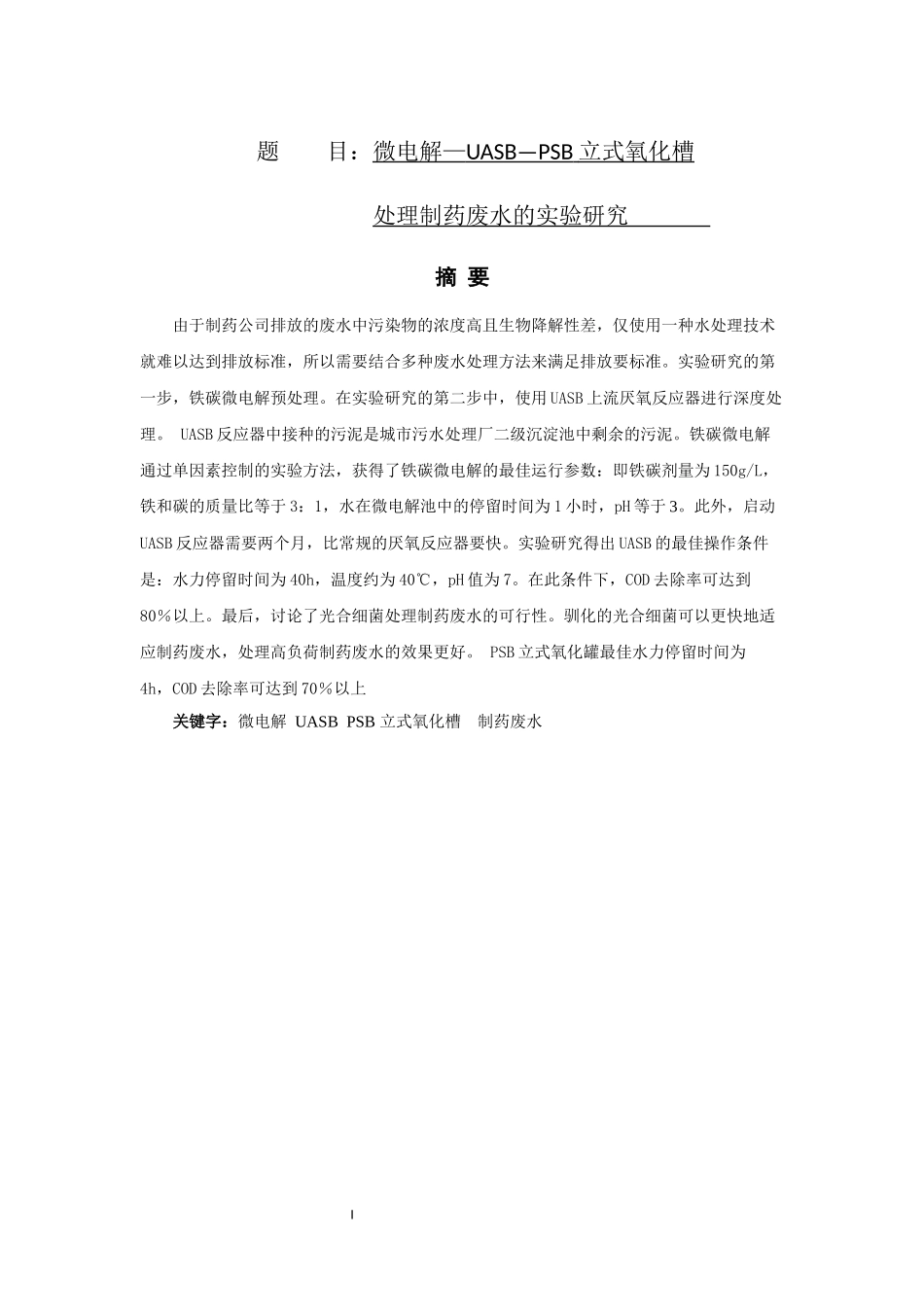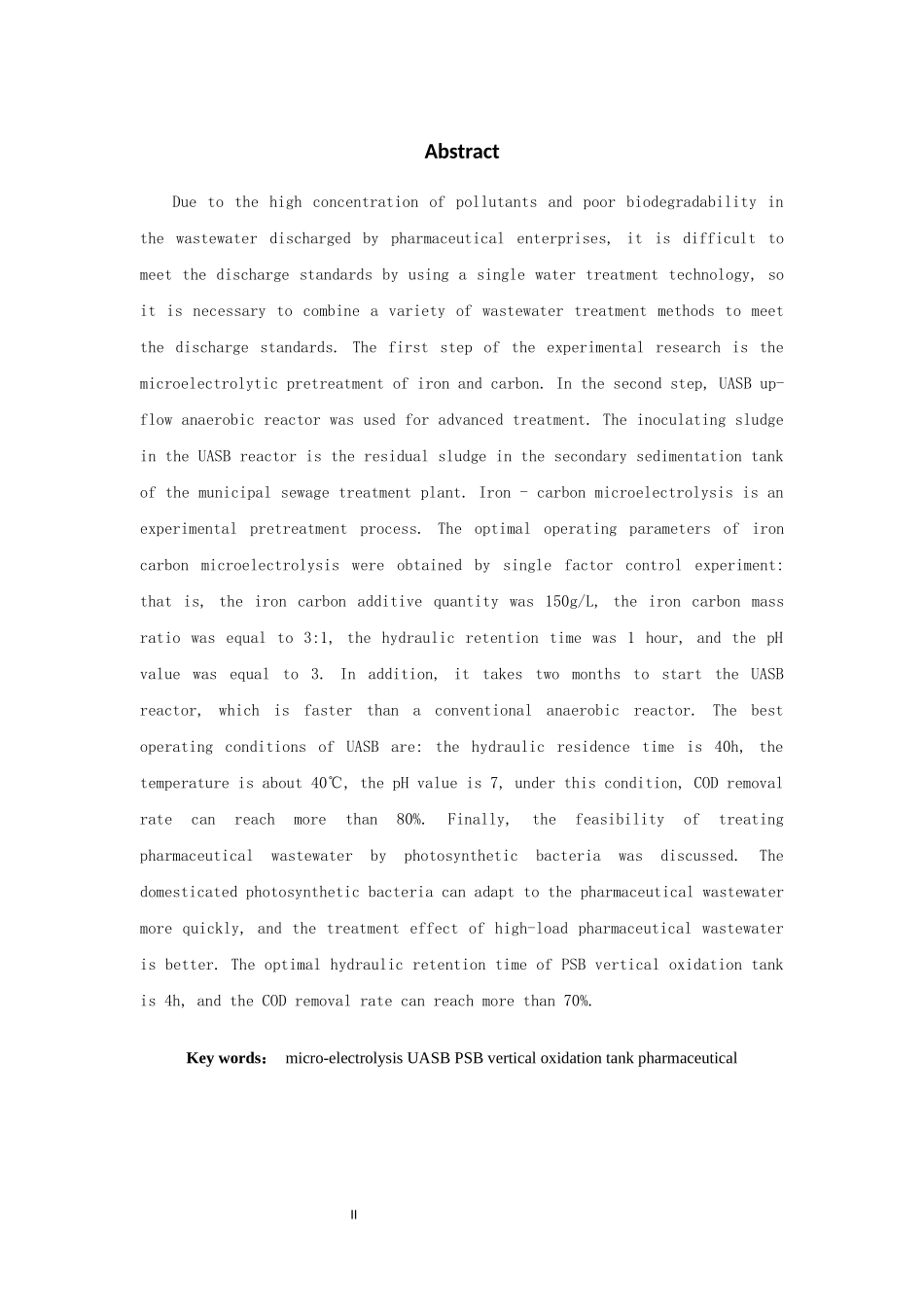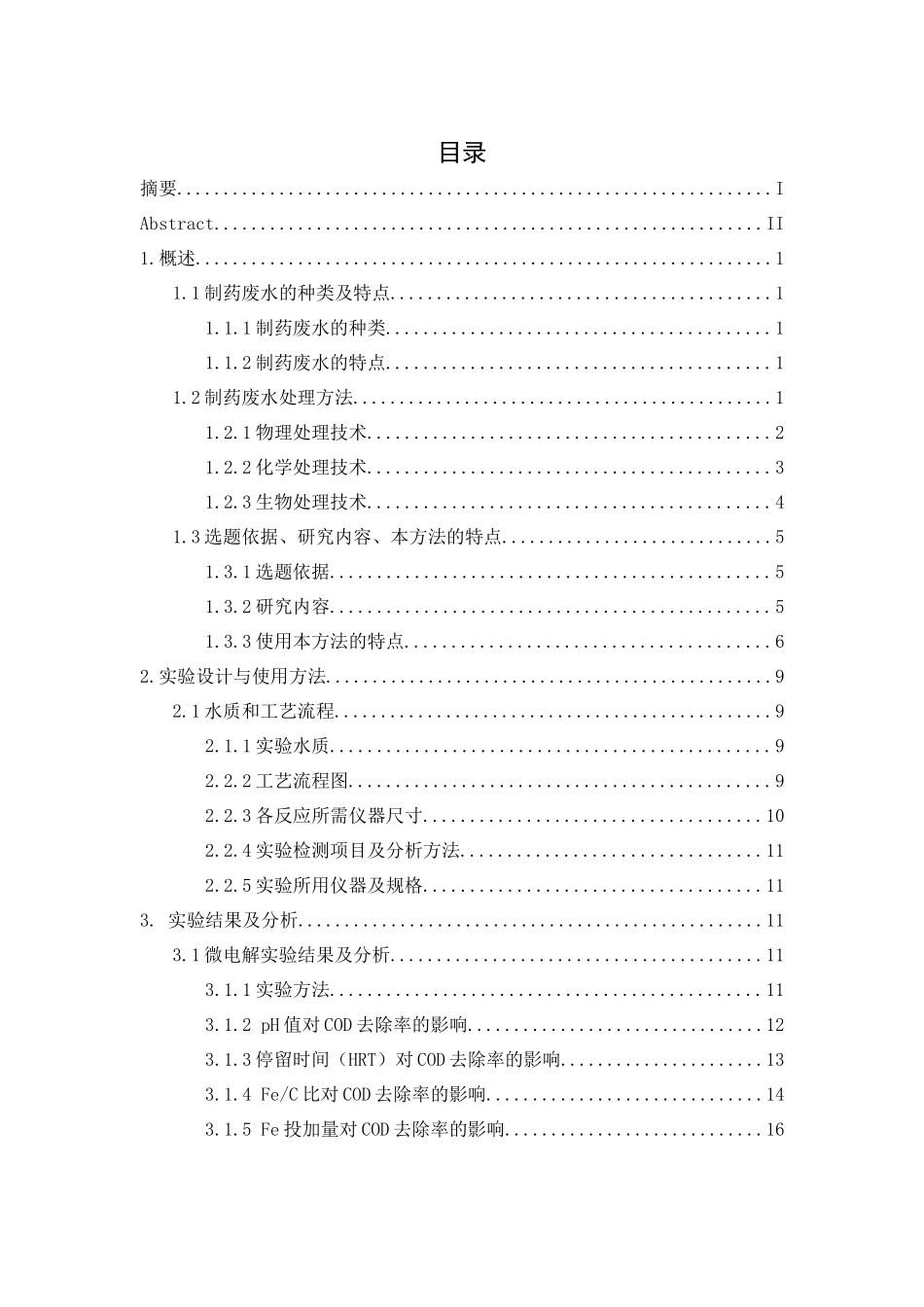I 题 目:微电解— UASB—PSB 立式氧化槽 处理制药废水的实验研究 摘 要 由于制药公司排放的废水中污染物的浓度高且生物降解性差,仅使用一种水处理技术就难以达到排放标准,所以需要结合多种废水处理方法来满足排放要标准。实验研究的第一步,铁碳微电解预处理。在实验研究的第二步中,使用 UASB 上流厌氧反应器进行深度处理。 UASB 反应器中接种的污泥是城市污水处理厂二级沉淀池中剩余的污泥。铁碳微电解通过单因素控制的实验方法,获得了铁碳微电解的最佳运行参数:即铁碳剂量为 150g/L,铁和碳的质量比等于 3:1,水在微电解池中的停留时间为 1 小时,pH 等于 3。此外,启动UASB 反应器需要两个月,比常规的厌氧反应器要快。实验研究得出 UASB 的最佳操作条件是:水力停留时间为 40h,温度约为 40℃,pH 值为 7。在此条件下,COD 去除率可达到80%以上。最后,讨论了光合细菌处理制药废水的可行性。驯化的光合细菌可以更快地适应制药废水,处理高负荷制药废水的效果更好。 PSB 立式氧化罐最佳水力停留时间为4h,COD 去除率可达到 70%以上关键字:微电解 UASB PSB 立式氧化槽 制药废水II AbstractDue to the high concentration of pollutants and poor biodegradability in the wastewater discharged by pharmaceutical enterprises, it is difficult to meet the discharge standards by using a single water treatment technology, so it is necessary to combine a variety of wastewater treatment methods to meet the discharge standards. The first step of the experimental research is the microelectrolytic pretreatment of iron and carbon. In the second step, UASB up-flow anaerobic reactor was used for advanced treatment. The inoculating sludge in the UASB reactor is the residual sludge in the secondary sedimentation tank of the municipal sewage treatment plant. Iron - carbon microelectrolysis is an experimental pretreatment process. The optimal operating parameters of iron carbon microelectrolysis were obtained by single factor control experiment: that is, the iron carbon additive quantity was 150g/...












